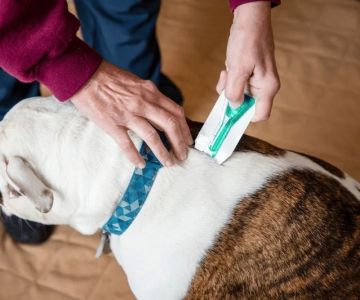How to Introduce a New Pet to My Household
- 1. Planning the Introduction: What You Need to Know
- 2. Gradual Introduction: Taking it Step-by-Step
- 3. Handling the First Meetings Between Pets
- 4. Managing Stressful Situations and Reactions
- 5. Long-Term Integration: Creating Harmony in the Home
- 6. When to Seek Professional Help for Pet Integration
1. Planning the Introduction: What You Need to Know
Introducing a new pet to your household is an exciting yet delicate process. Whether you're welcoming a new dog, cat, or any other pet, careful planning is crucial to ensure a smooth transition. It's essential to understand that pets are creatures of habit, and changing their environment or introducing a new companion can cause anxiety or stress. In this section, we'll explore the steps to take before bringing your new pet home and how to prepare your existing pets for the upcoming change.
Before the first introduction, make sure you have a separate space for the new pet. This space will act as a safe zone, where they can get acclimated to their new surroundings without feeling overwhelmed. Also, consider the personalities of your current pets, as some may be more territorial or sensitive than others. A calm and controlled introduction will set the foundation for successful integration.
2. Gradual Introduction: Taking it Step-by-Step
The key to a successful pet introduction is a gradual, controlled process. Rushing the interaction can lead to stress, anxiety, or even aggression. A slow introduction allows both pets to get used to each other at their own pace. Start by allowing the pets to smell each other’s scent. For dogs, this might involve swapping bedding or toys. For cats, you can let them explore each other's scent through a closed door.
Once both pets have had a chance to adjust to each other's scent, you can begin to introduce them visually. Keep the pets on leashes or in their carriers, allowing them to see each other without direct contact. Observe their reactions closely. If they show signs of aggression or extreme anxiety, it's essential to back off and try again later. With time, you can begin short, supervised face-to-face meetings, always keeping the sessions brief and positive.
3. Handling the First Meetings Between Pets
During the first face-to-face meeting between your new pet and existing pets, it’s essential to remain calm and composed. Pets are highly sensitive to human emotions, and if they sense stress or tension, they may become anxious as well. To make this process smoother, it’s helpful to have a neutral area, such as a park or an open space in your home, where neither pet feels territorial.
For dogs, the first meeting should involve walking them in parallel, without direct interaction. This helps them become accustomed to each other’s presence. For cats, it's best to supervise the initial meeting from a distance, using treats or toys to create positive associations. Always monitor body language closely—raised fur, growling, or lunging are signs that the pets are not ready for full contact.
4. Managing Stressful Situations and Reactions
During the introduction process, stress is common, but how you manage it will affect the success of your integration efforts. If one or both pets display signs of stress, such as barking, hissing, or growling, take a step back. Never punish them for expressing anxiety—this will only worsen the situation.
Instead, create a calm environment by separating the pets and giving them time to cool down. You can also engage them in stress-relieving activities, such as playing with toys or offering treats. If you're introducing a pet to a particularly anxious animal, consider using calming aids like pheromone diffusers or anxiety wraps. These products can help soothe both pets during the transition phase.
5. Long-Term Integration: Creating Harmony in the Home
Once the initial introductions are complete, it’s essential to continue reinforcing positive behavior and interactions between your pets. Over time, the new pet will become more familiar with their environment, and the initial tension will decrease. However, long-term success requires patience and consistency.
Provide each pet with their own personal space, food, and toys to reduce resource guarding. Positive reinforcement, such as rewards for calm behavior, is vital during this phase. Encourage your pets to engage in activities together, such as playing or taking walks, but always supervise these activities. It may take weeks or even months for the pets to fully adjust, so be patient and allow them time to build a relationship at their own pace.
6. When to Seek Professional Help for Pet Integration
While many pets will eventually get along with time, some may require professional assistance to overcome behavioral challenges. If the introduction process is becoming increasingly stressful or aggressive, it's a good idea to consult with a veterinarian or professional animal behaviorist.
A professional can help you understand your pets’ specific needs and offer tailored solutions. They may recommend behavior modification techniques, or in some cases, suggest that the animals remain separated until they are ready to interact peacefully. Seeking professional help early can prevent long-term behavioral issues and ensure that your pets are comfortable and happy in their new dynamic.
If you're looking for guidance on how to introduce a new pet to your household, Hidden Brook Veterinary offers expert advice and resources to ensure a smooth transition for your pets. Their team can assist you in creating a peaceful environment for both your new and existing pets, using proven techniques and recommendations to promote harmony in your home.











